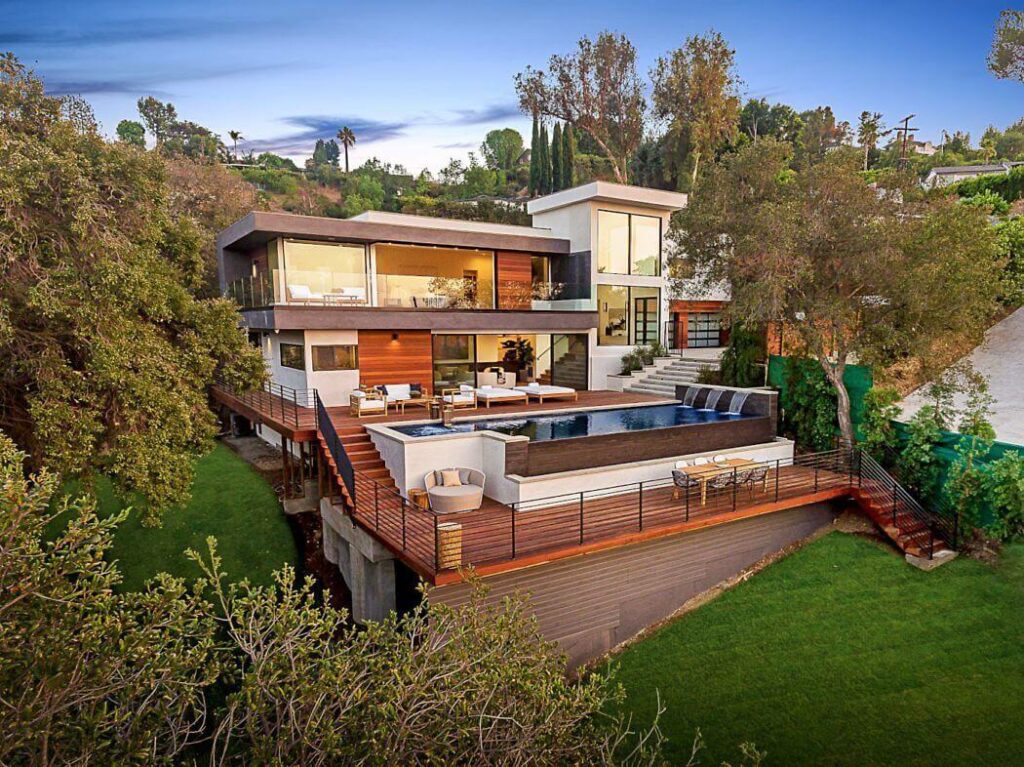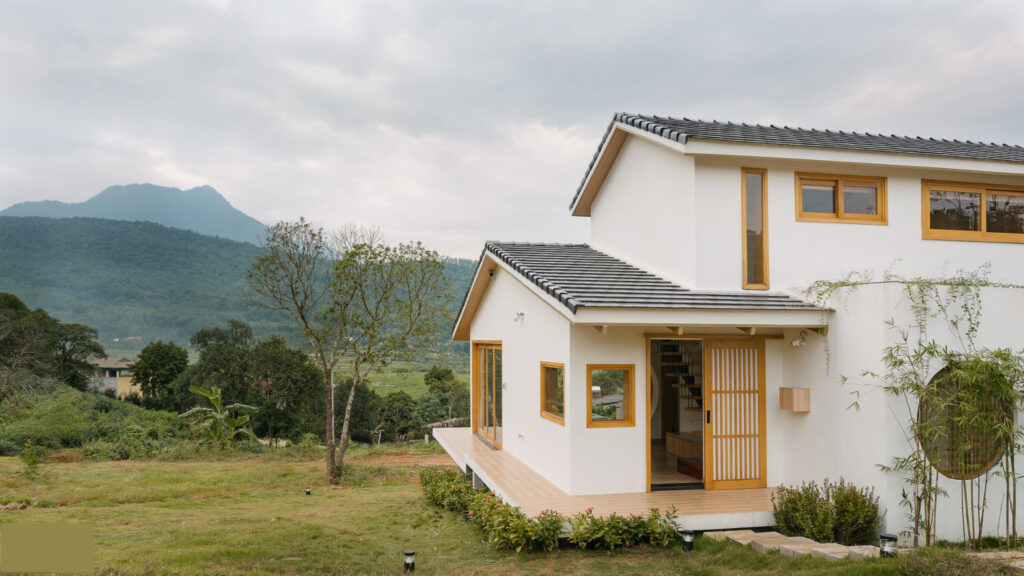Designing architecture for mountain homes requires a blend of aesthetics, functionality, and harmony with nature. Given the complex and diverse terrain, mountain homes present unique challenges and opportunities for architects. From material selection and space planning to sustainable solutions, every aspect must be carefully considered. This article will explore effective architectural solutions for mountain homes, aiming to create living spaces that are visually appealing, comfortable, and environmentally friendly.
Architectural solutions when building houses in hills and mountains
Terrain Analysis and Site Selection
One of the first and most crucial steps in designing a mountain home is analyzing the terrain. Mountainous terrains are often uneven, with slopes and natural elements like trees, rocks, and streams. Understanding the terrain helps architects determine the optimal construction site, leveraging the natural beauty and ensuring the safety of the structure.
- Construction site: Choose a stable ground location, avoiding areas prone to landslides or flooding. The site should also be selected to maximize the scenic views, fostering a connection between the inhabitants and nature.
- House orientation: Determine the house orientation to make the most of natural light, wind, and protection from harsh weather conditions. Orientation also affects ventilation and energy efficiency.

Foundation and Structural Design
Mountainous terrains require special foundation and structural solutions to ensure the stability and durability of the structure.
- Pile foundation: Use deep piles to increase the stability of the structure on sloped terrain. These piles help distribute the load evenly and minimize the risk of landslides.
- House structure: Utilize steel frames or reinforced concrete structures to ensure durability and resistance to harsh weather conditions. Lightweight and flexible structures also help reduce the load on the foundation.
Building Materials
Choosing appropriate building materials not only helps the structure blend with its surroundings but also enhances sustainability.
- Natural materials: Use locally available materials such as stone, wood, and other natural elements to reduce transportation costs and environmental impact. These materials also help the mountain home appear more integrated with the natural landscape.
- Modern materials: Combine modern materials like tempered glass, steel, and concrete to create a fusion of traditional and contemporary aesthetics, while also increasing sustainability and convenience.
Living Space Design
Designing living spaces for mountain homes should optimize the connection between indoor and outdoor spaces, creating a spacious and nature-oriented environment.
- Expanding space: Use large glass doors, balconies, and terraces to extend the living space outdoors, providing a sense of openness and enjoying the natural views.
- Tiered and zoned design: Design the house in tiers and clearly defined functional zones, leveraging the slope of the terrain to create diverse and rich living spaces.
Sustainable Solutions
Mountain homes should be designed according to sustainable standards to minimize negative environmental impact and increase energy efficiency.
- Renewable energy systems: Use solar and wind energy to power the house and provide heating. Solar panels and small wind turbines can be installed on the roof or surrounding areas.
- Water collection and reuse systems: Design systems to collect rainwater and treat wastewater to reduce reliance on common water supplies and protect the surrounding environment.
- Insulation and natural ventilation: Use good insulation materials and design natural ventilation systems to reduce the need for air conditioning and heating, thereby saving energy.

Successful Examples
Many mountain homes worldwide have successfully applied innovative and sustainable architectural solutions, providing inspiration for architects and investors.
- Terra Rosa House, Vietnam: A mountain home using local materials such as terracotta, wood, and stone, combined with open design to maximize natural light and ventilation.
- Casa Meztitla, Mexico: A hillside home built with concrete and glass, leveraging the slope to create tiered living spaces and extend views to the natural landscape.
- House at Big Sur, USA: A cliffside home using tempered glass and stainless steel, creating a strong connection between indoor and outdoor spaces while protecting against harsh weather conditions.
Conclusion
Designing architecture for mountain homes requires careful consideration and creativity to create living spaces that are visually appealing, comfortable, sustainable, and in harmony with nature. From terrain analysis, material selection, and living space design to sustainable solutions, every factor plays a crucial role in creating the perfect mountain home. With the advancement of technology and increased awareness of environmental protection, architectural solutions for mountain homes will become increasingly diverse and effective, offering unique and exciting living experiences for people.